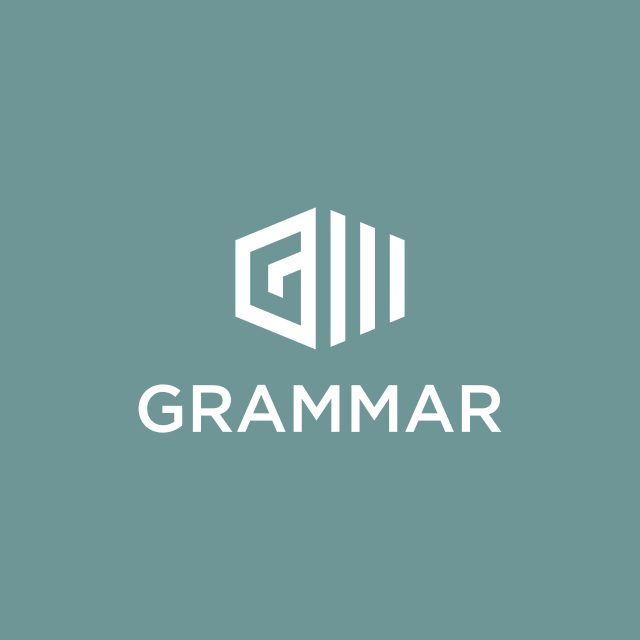Editorial »
Recently Added Articles Page #50
Our vibrant community of passionate editors is making sure we're up to date with the latest and greatest grammar tips, articles and tutorials.
Serial-Comma Rule ‑ Red, White, and Blue (2) Comma, Comma, and CommaWhen you use a coordinating conjunction (usually and or or) to join two elements of a series, no comma comes before the conjunction. But when you join three or more elements, the preferred rule requires a comma before the coord... | added by edgood 8 years ago |
Here are some examples of correctly using the serial comma: The flag is red, white, and blue. (Three predicate adjectives.)In her will, the woman left jewelry, coins, stocks and bonds, but no cash. (Four direct objects of the transitive verb left.)Th... | added by edgood 8 years ago |
If the series is long and complex or any one element has a comma within it, separate each element of the series with a semicolon: The company has offices in Greensboro, North Carolina; Atlanta, Georgia; Los Angeles, California; and Taipei, Taiwan.... | added by edgood 8 years ago |
In a series consisting of just two elements, ordinarily you should not use a comma with the conjunction. This mistake usually occurs in a sentence with two verbs: The committee revisited this issue and created a new rule to guide the actions of super... | added by edgood 8 years ago |
Commas and Independent Clauses Comma Before the andWhen the conjunction joins two or more independent clauses, put a comma before the conjunction: The supervisor reported the misbehavior, but the personnel committee ignored the evidence and refused to terminate the employee. There... | added by edgood 8 years ago |
Commas and Introductory Clauses or Phrases You should put a comma after an introductory clause or phrase: Though the agency had studied this issue before, it went ahead with another study. (Introductory dependent clause.)If I were you, I would research the case thoroughly. (Introductory depen... | added by edgood 8 years ago |
Adverbial Phrases Between Subject and Verb Put preceding and trailing commas around any adverbial phrase coming between the subject and the verb: Ms. Smith, after commenting on the evidence, ruled in favor of the supervisor. The court, in a manner surprising to all, excluded the press from th... | added by edgood 8 years ago |
Adjectival Clauses and Phrases Restrictive vs. NonrestrictiveIf the adjectival clause or phrase is nonrestrictive, put commas around it. If the clause or phrase is restrictive, do not put commas around it. See the discussion of that vs. which in chapter 4 of the eBook Developing a... | added by edgood 8 years ago |
If the information in a parenthetical pause relates closely to the sentence, enclose it in commas. Otherwise, use the dash or parentheses: The committee's decision, to say the least, sparked considerable controversy.The members of the committee were,... | added by edgood 8 years ago |
Appositive with CommasA word, phrase, or clause in apposition to a noun is usually set off by commas (dashes or parentheses might also be used): The chairman of the committee, Senator Jones, rambled on and on. The press surrounded the witness—the c... | added by edgood 8 years ago |
Commas and Coordinate Adjectives Long, Hot SummerWhen each of two adjectives modifies the same noun, put a comma between them. As a test, put the word and between the two adjectives. If it fits, then the adjectives are called coordinate adjectives: It is going to be a long, hot summ... | added by edgood 8 years ago |
Complementary or Antithetical Expressions DefinedA complementary or antithetical expression requires a comma at its beginning and end. Perhaps I should define complementary or antithetical expressions. These are usually groups of words complementing or contrasting a preceding word and combin... | added by edgood 8 years ago |
Comma After the YearWhen you indicate month, day, and year, put a comma after the day and after the year (unless some other punctuation mark, like a period or question mark, follows the year). Include these commas even if the month-day-year expressio... | added by edgood 8 years ago |
If you depict dates by day-month-year, not month-day-year, do not use commas. Make certain you use a consistent system throughout the document. Those disliking the required commas for month-day-year expressions used as adjectives (e.g., "your July 1,... | added by edgood 8 years ago |
If you omit the day and just include the month and year, do not use a comma: In January 1945 he was born in a large southern city. We now wish to respond to your July 2006 letter. Previous: Dates - Day-Month-YearNext: Commas and Elliptical Expr... | added by edgood 8 years ago |
Commas and Elliptical Expressions Use a CommaUse a comma to show the omission of a word or words readily understood from context: In Illinois, there are seventeen such institutions; in Ohio, twenty-two; in Indiana, three. ExceptionThere is an exception. When, in spite of the omission... | added by edgood 8 years ago |
Comma Goes Inside YouWhen the context calls for a comma at the end of material enclosed in quotation marks, the comma should be placed inside the quotation marks: We should study the report on "discrimination in the workplace," which was written by t... | added by edgood 8 years ago |
IntroductionTop writers do not use the semicolon as much today as they did in the past. As a matter of style, you should try to avoid using too many sentences consisting of two independent clauses joined by a semicolon. The mark does have its uses, h... | added by edgood 8 years ago |
Semicolons and Independent Clauses A semicolon separates two or more independent clauses joined without a coordinating conjunction: The Court required police to warn suspects of their constitutional rights; in doing so, it made judicial history. Previous: Chapter 3 - SemicolonNe... | added by edgood 8 years ago |
“However” and Other Conjunctive Adverbs Conjunctive AdverbsConjunctive adverbs include however, therefore, thus, furthermore, and others.If you use a conjunctive adverb to join two independent clauses (compound sentence), then use a semicolon, followed by the conjunctive adverb, followed b... | added by edgood 8 years ago |
Semicolons Separating Elements in a Series Semicolons Instead of CommasWe reviewed this rule when we discussed the serial-comma rule in the discussion on the comma above. It bears repeating, however. When elements in a series are long and complex or involve internal punctuation, they should b... | added by edgood 8 years ago |
Semicolons with Quotation Marks Semicolon Comes OutsideThe semicolon should be placed outside ending quotation marks. When the quoted matter ends with a semicolon, the semicolon in the quotation is dropped: The agency reviewed those petitions that were "timely"; it ignored those th... | added by edgood 8 years ago |
The colon joins two independent clauses (compound sentence), introduces lists, and sets up quotations. Previous: Semicolons with Quotation MarksNext: Colon and Independent Clauses... | added by edgood 8 years ago |
Colon Acts like a PeriodMany writers use the colon between two independent clauses, especially when the subject matter of the second clause expands on, or exemplifies, the subject matter of the first. Some writers start the second clause with a capit... | added by edgood 8 years ago |
A ListUse the colon to introduce a list or a series: The committee's study focused on the most critical areas: development of software, needed changes in computer systems, and recruitment of new engineers. Use of namely, that is, etc.If the list or s... | added by edgood 8 years ago |







Discuss these recent grammar articles with the community:
Report Comment
We're doing our best to make sure our content is useful, accurate and safe.
If by any chance you spot an inappropriate comment while navigating through our website please use this form to let us know, and we'll take care of it shortly.
Attachment
You need to be logged in to favorite.
Log In